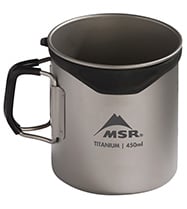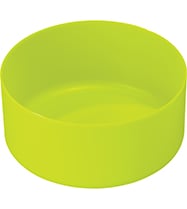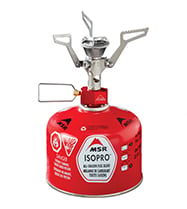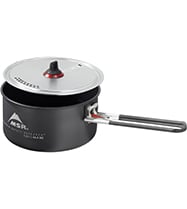Best Backpacking Snacks for Thru Hikers
Every step felt harder than the last, like I was hiking through a pool of thickening molasses. The Georgia mountains drained me, pulverizing my small frame until a friend told me I was probably “bonking” – or losing steam from inadequate nutrition. As soon as I stopped to cram a granola bar into my mouth, I felt alive again, like a newly-watered plant. My energy returned. And the looming climb no longer towered over me, laughing at my inadequacy. Instead, I felt confident in my ability to keep going – at least until I bonked again.
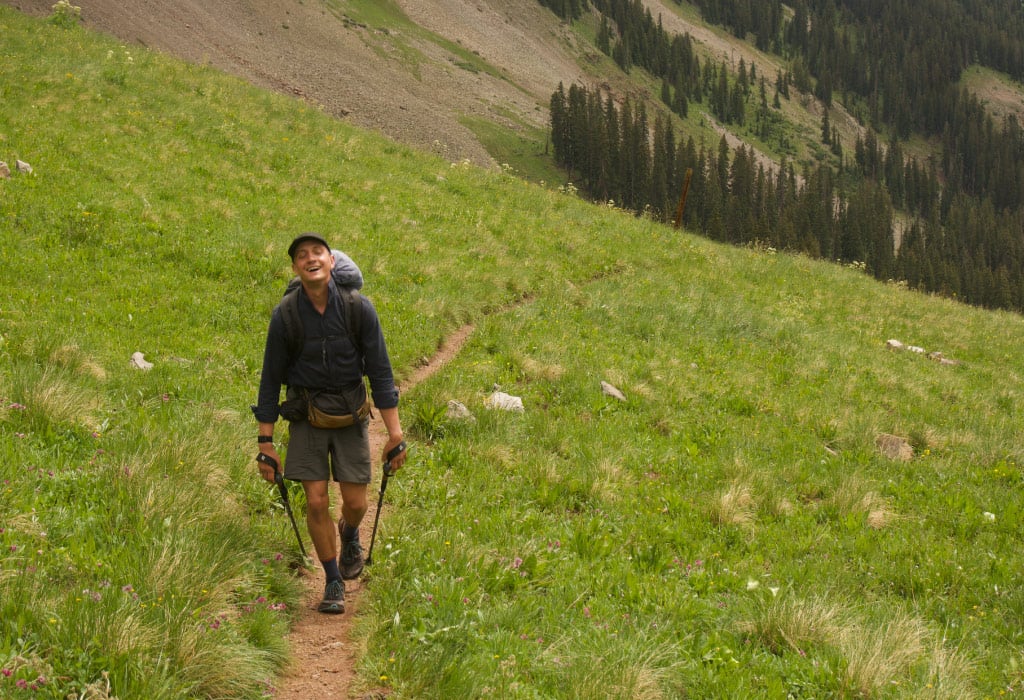
One of the biggest challenges of my thru hike was learning how to properly fuel myself. Since long-distance backpackers have been known to burn as many as 6,000 calories per day, it seemed impossible to nourish my body appropriately in that environment. But finding calorically dense backpacking snacks like the following options helped.
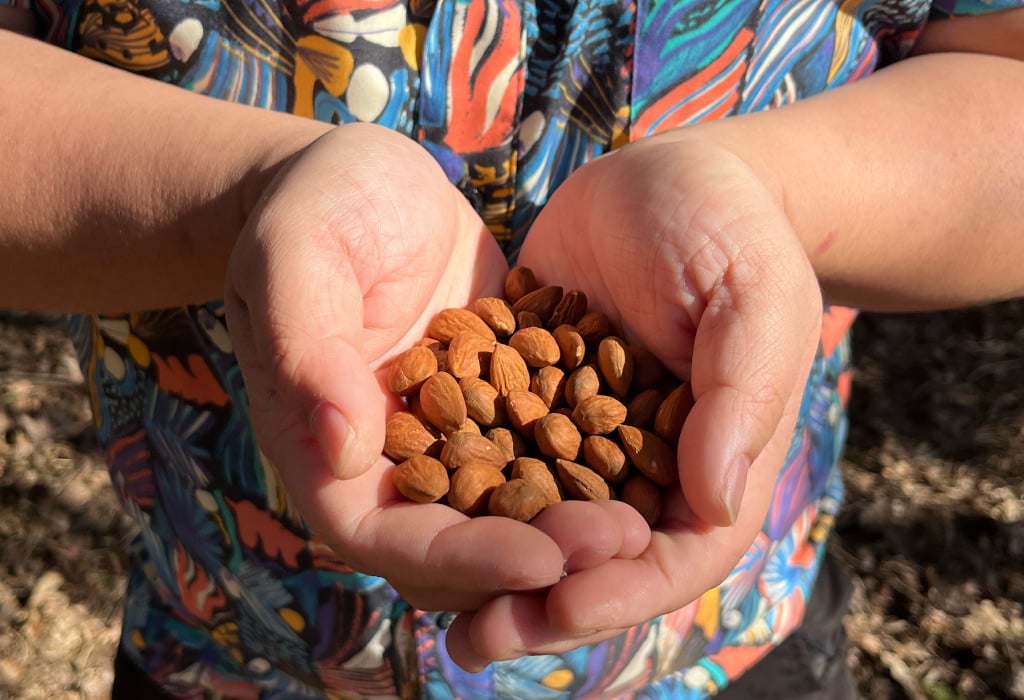
High-Protein Backpacking Snacks
Thru hikers exert a lot of energy on a day-to-day basis. And, when protein is a piece of the equation, this energy exertion can contribute to muscle growth. While it is fairly easy to find carbohydrate-heavy food options on standard thru hikes, protein can be harder to find. But keeping the following backpacking snacks on hand can help you meet your protein goals:
- Nuts and seeds
- Dehydrated eggs
- Dehydrated refried beans
- Protein Powder
- Dried Meats
- Tuna, Chicken, and Salmon packets
- Cheese
For perspective, 30 grams (or one ounce) of mixed nuts will have anywhere from 2 to 7 grams of protein. Nuts also contain unsaturated fats and antioxidants, which can make them a great pick for thru hikers.
Protein powder is another great addition to the standard thru hiker food bag because it can boost your overall protein consumption. Gnarly Nutrition offers single-serve protein packets in chocolate or vanilla flavors, which can make food prep a lot easier. And dried meats like pepperoni, summer sausage, and jerky are both tasty and protein-heavy.
Carbohydrate-Heavy Backpacking Snacks
Endurance athletes require carbohydrates. In fact, those who expect to be exerting themselves for more than 60 minutes should be eating carbohydrates to support long-term exertion, which is why you see so many marathon runners with goos and chews. Popular carbohydrate snacks for thru hikers include:
- Bagels
- Tortillas (for wraps)
- Oatmeal
- Dried Fruit
- Couscous
- Instant noodles
- Mashed potatoes
- Pasta and rice dishes
While dried veggies are often less palatable than other readily-available snacks, they offer key nutrients to endurance athletes, which makes them an essential piece of the equation as well. Some hikers will mix dried veggies into their dinner dishes, to make them tastier.
Bars, Waffles, and Cookies
Bars and waffles are a key staple in any thru hiker’s food bag. They are easy to consume while you’re on the go and typically have a great calorie-to-weight ratio, making them a good pick. They also come in a lot of different shapes and sizes. From the cake-style, dense protein bar to the lightweight and fluffy option, it can be fairly difficult to find delicious options for long-term hikes. Clif Bars are usually the most readily available protein bar option, but some additional options might include Bobo’s Oat Bars, Honey Stinger Nut and Seed Protein Bars and Quest Protein Cookies. These options all have a mixture of carbohydrates and protein and, for me, tend to be the best tasting.
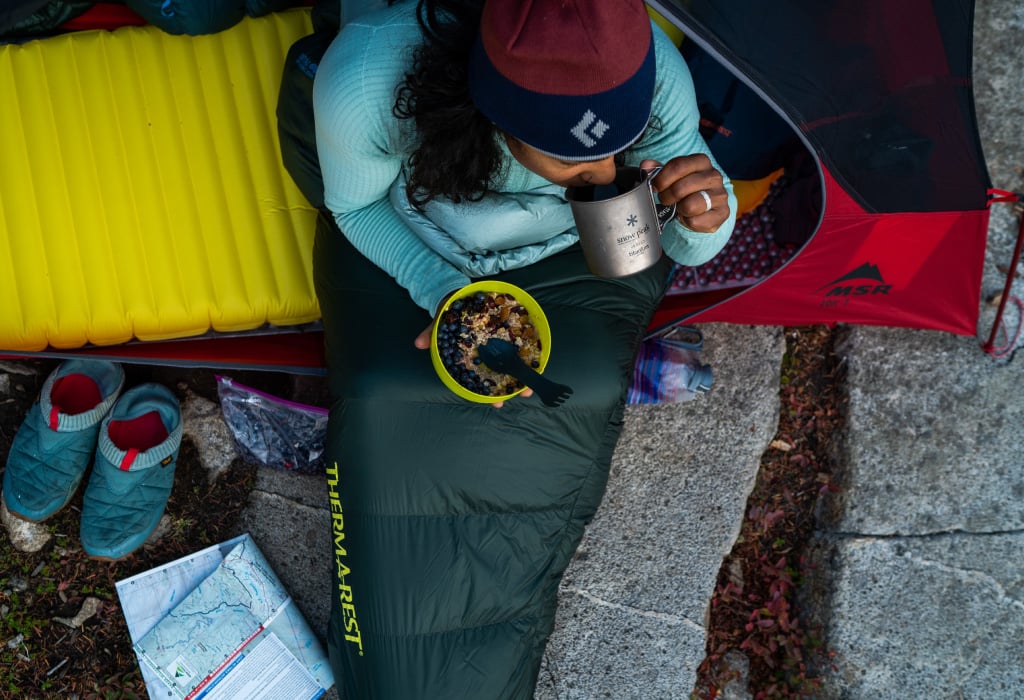
Consider the Calories
Most thru hikers end up hiking on an extended caloric deficit. This can be problematic for a variety of reasons, like malnutrition and slower recovery times, but one way to overcome this issue is to consume calorically and nutritionally dense foods. The best option is to eat a variety of calorically dense foods on the trail and while taking zero’s in town. This better prepares you to support your body rather than destroy it.
What About Food Weight?
Another key component in the backpacker’s pantry is food weight. Since thru hikers carry their homes on their back for months on end, they typically don’t want to add unnecessary weight to their system. This leads most hikers to make food choices based on weight. Ideally, thru hikers like to find options with about 100 calories per ounce to guarantee that the weight is worth the nutrition. Snacks like Clif bars and candied ginger typically have about 100 calories per ounce. Cheez-its, and peanut butter pretzels tend to have about 120 calories per ounce. Olive oil, which can easily be mixed into dinners, has about 250 calories per ounce, making it another great source of calories.
Should I Thru Hike With A Lot of Junk Food?
Junk food contains a lot of calories, but mostly “empty” ones. These calories, though full of energy, won’t provide a substitute for whole foods and can’t help your body rebuild from the damage it will take each day on the trail. Don’t get me wrong, candy and junk food can be a nice cherry on top while you’re walking across the country, but they won’t do much in the way of supporting health and wellness. While junk food can provide hikers with a more enjoyable hiking experience, it’s also important to provide your body with the essential nutrients it needs to stay healthy and make it to the end of your hike.
Mixing It Up On Trail
A common issue that long-distance backpackers face is food boredom. When you eat the same thing over and over again, it can easily become tough to stomach – which is a huge issue for those who exert a lot of physical energy. One good strategy to combat this phenomenon is to mix it up. Change the types of foods that you’re eating every time you resupply. This can help you stay engaged with your food. But it’s also more likely to provide you with a greater variety of nutrients. Whether you plan to mail yourself resupply boxes or rely on local grocery stores to keep your food bag stocked, a good rule of thumb is to switch food types every other week.
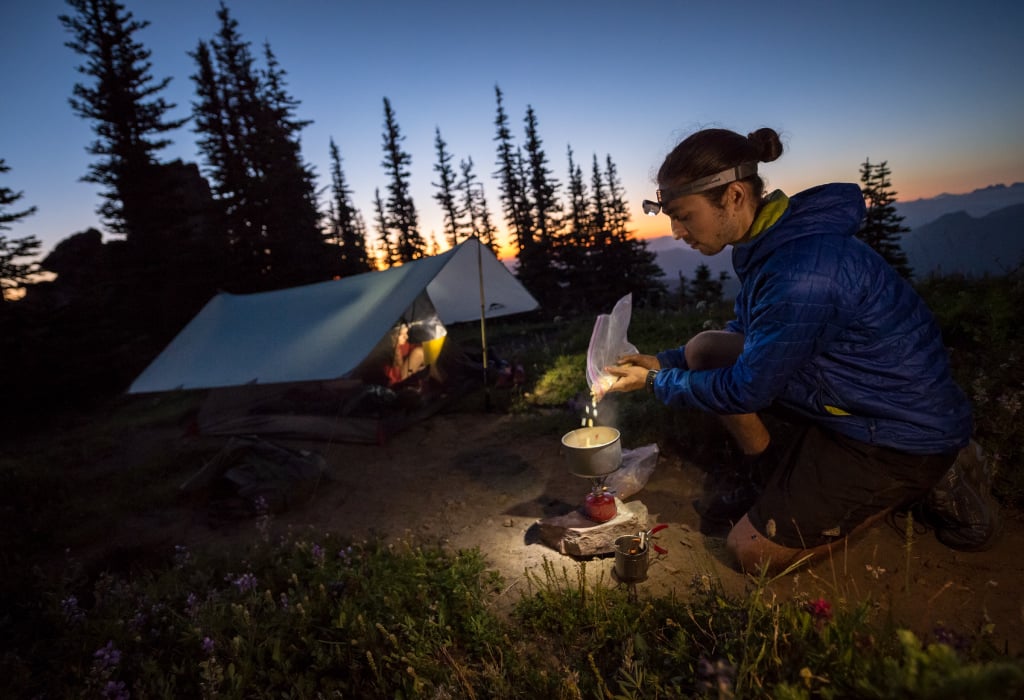
Stoves & Cookware
The appropriate stoves and cookware go a long way to support your long-term nutritional goals on the trail. Finding versatile stoves that accommodate a variety of cooking styles opens you up to more food prospects, ultimately supporting better health. In the standard thru hiking environment, a stove that can simmer food goes a long way. It can also be helpful to have an on/off switch and lightweight cookware to support your every food need.
Additional Tips & Tricks
Backpacking snacks are a vital piece of long-distance backpacking, since they better allow you to support muscle growth and repair. But there are a variety of additional tips and tricks that may assist thru hikers in their endeavors to stay healthy.
Choose the Right Drinks
Fluids provide an opportunity for thru hikers to consume more calories. Tailwind Nutrition’s Active Hydration with Collagen not only comes with electrolytes to keep you hydrated, but it also features collagen which has been shown to support connective tissues, and reduce potential injuries. Since thru hikers are constantly breaking down their bodies, it can be extremely helpful to incorporate collagen into your regimen.
Many thru hikers also struggle to consume enough greens while on trail. But they don’t have to. The Gnarly Nutrition Performance Greens come with tons of micronutrients to support overall health, allowing you to mix the formula into water or food for easy consumption. The greens, themselves, come in two different flavor options, and they can be purchased in individual packets or in a large bag to support convenient resupplies.
Stock Up on Condiment Packets
It can be pretty difficult to create superb cuisine while you’re on trail. Without extra preparation, you often end up with bland versions of foods that you typically love. But one good way to increase the flavor of your food while backpacking is to use condiment packets. Many fast food chains offer a variety of options, or you can purchase them prior to your trip and send them to yourself in resupply boxes. The result is usually more flavorful and delicious meals.
In the same way that hikers all gravitate towards different gear systems, we all have different dietary preferences and restrictions. When in doubt about your choice of backpacking food, consult a nutritionist to verify that you’re appropriately fueling yourself. When in doubt, make sure to get as wide a variety of different foods as possible in your diet. This will go along way towards supporting your body in what will surely be a challenging adventure.
Related Posts:
- Nutrition for Thru-Hikers Part 1: Food for Fuel
- Thru-Hiking the Te Araroa: Food Planning
- How to Choose Ultralight Backpacking Gear
 About the Author
About the Author
Mary Beth Skylis has been lucky enough to begin her life of outdoor pursuits on long trails, hiking the 2200-mile Appalachian Trail, the 458-mile Colorado Trail and part of the Annapurna Circuit. She has feasted her eyes on the snowy Himalayan peaks, watched aggressive rhinos contemplating a charge, and observed Costa Rican monkeys leaping through the air. Her work can be found in Backpacker Magazine, Outside Magazine, and Yoga Journal.

